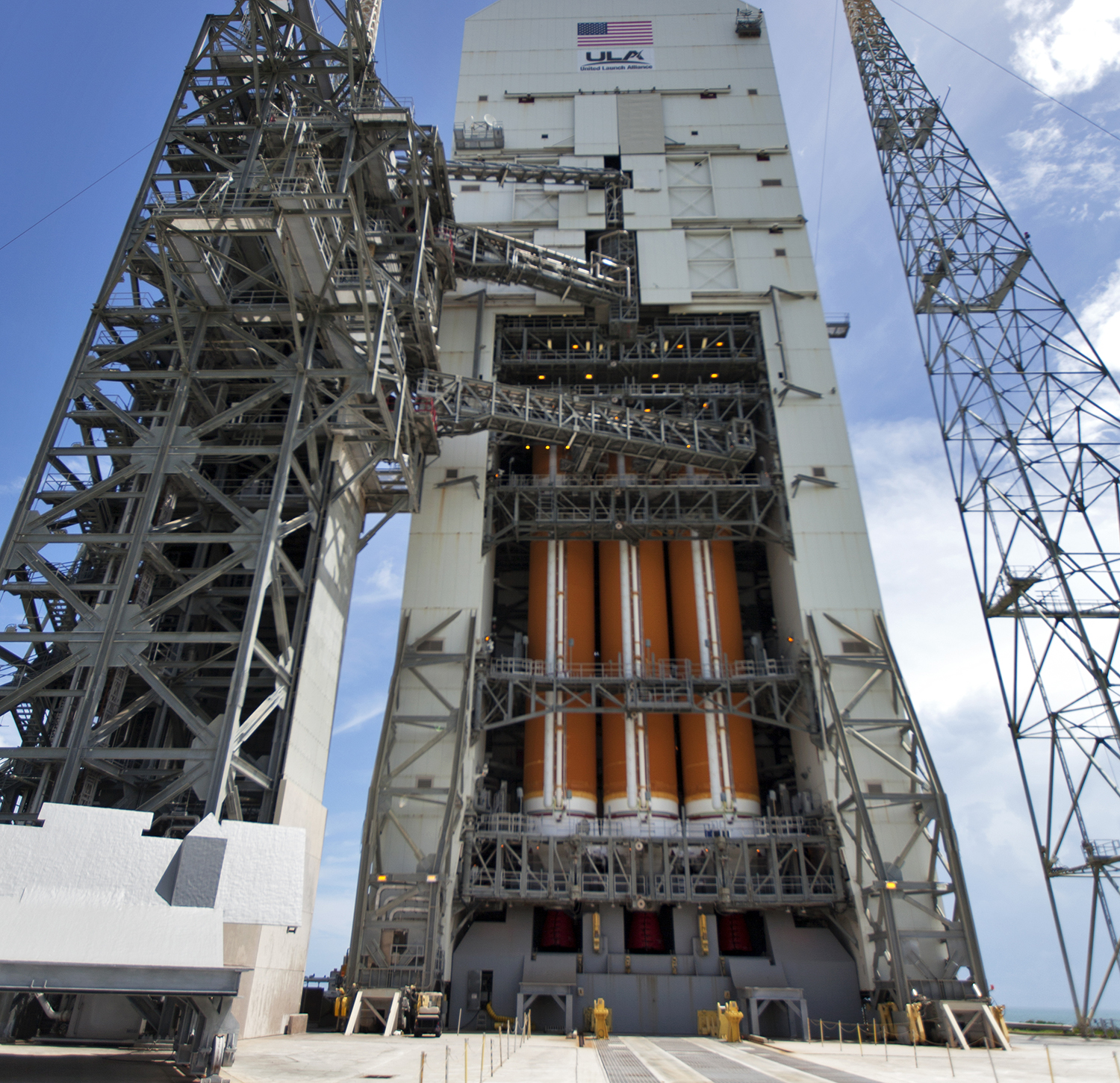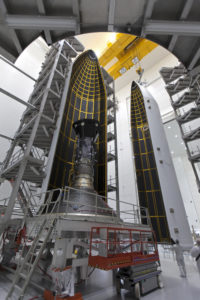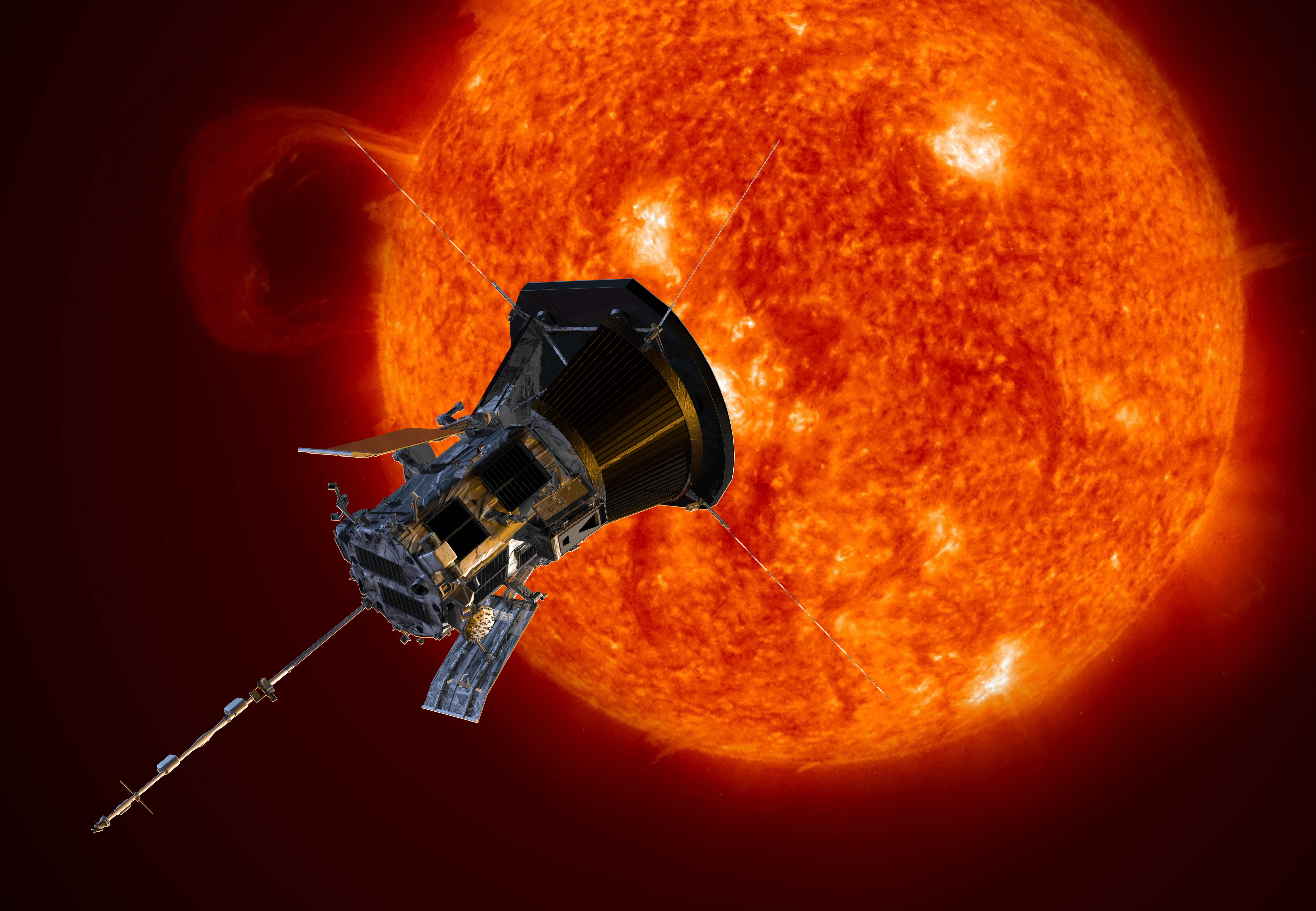Today is launch day for NASA’s Parker Solar Probe, as it begins its journey to the Sun. Everything is set for launch of the pioneering spacecraft at 3:53 a.m. EDT on a United Launch Alliance Delta IV Heavy rocket from Space Launch Complex 37 at Cape Canaveral Air Force Station in Florida. Stay tuned, launch coverage will begin at 3 a.m.
Author: Amanda Griffin
Parker Solar Probe NASA EDGE Rollback Webcast Today

Watch the live webcast with NASA EDGE during the United Launch Alliance (ULA) Mobile Service Tower rollback at Space Launch Complex-37. The live show begins at 6:30 p.m. and can be viewed on NASA TV and social media at: NASA TV: www.nasa.gov/live
NASA EDGE Facebook: www.facebook.com/nasaedgefan
NASA EDGE YouTube: www.youtube.com/user/NASAedge
NASA EDGE Ustream: www.ustream.tv/nasaedge
Guests on the show:
Jim Green, NASA’s Chief Scientist
Nicky Fox, Parker Solar Probe project scientist, Johns Hopkins Applied Physics Laboratory
Eric Christian, deputy principal investigator of Integrated Science Investigations of the Sun (ISOIS), NASA Goddard Space Flight Center
Betsy Congdon, Parker Solar Probe Thermal Protection System lead engineer, Johns Hopkins Applied Physics Laboratory
Mic Woltman, chief, Fleet Systems Integration Branch, NASA’s Launch Services Program
NASA’s Parker Solar Probe is scheduled to lift off atop a ULA Delta IV Heavy at 3:33 a.m. EDT, at the opening of a 65-minute window, on Saturday, Aug. 11.
Parker Solar Probe Proceeds Toward Launch Aug. 11
The Parker Solar Probe mission and launch teams today concluded a successful Launch Readiness Review. There are no technical issues being worked at this time. Teams are proceeding for liftoff on Saturday, Aug. 11, at 3:33 a.m. EDT. On a United Launch Alliance Delta IV Heavy rocket with NASA’s Parker Solar Probe.
Parker Solar Probe will provide unprecedented information about our Sun, where changing conditions can spread out into the solar system to affect Earth and other worlds. The spacecraft will fly directly into the Sun’s atmosphere where, from a distance of – at the closest approach — approximately 4 million miles from its surface, the spacecraft will trace how energy and heat move through the Sun’s atmosphere and explore what accelerates the solar wind and solar energetic particles.
Meteorologists with the U.S. Air Force 45th Space Wing are predicting a 70 percent chance of favorable weather on launch day. Primary weather concerns are anvil clouds and cumulus clouds.
Launch Week Begins for Parker Solar Probe


Teams preparing for launch of NASA’s Parker Solar Probe are beginning a busy week leading up to liftoff, scheduled for Saturday, Aug. 11, at 3:33 a.m. EDT, the opening of a 65-minute window. The spacecraft will launch aboard a United Launch Alliance Delta IV Heavy rocket from Space Launch Complex 37 on Florida’s Cape Canaveral Air Force Station.
Parker Solar Probe will provide unprecedented information about our Sun, where changing conditions can spread out into the solar system to affect Earth and other worlds. The spacecraft will fly directly into the Sun’s atmosphere where, from a distance of – at the closest approach — approximately 4 million miles from its surface, the spacecraft will trace how energy and heat move through the Sun’s atmosphere and explore what accelerates the solar wind and solar energetic particles.
The agency is holding a prelaunch mission briefing Thursday, Aug. 9, at 1 p.m. The briefing will be broadcast live on NASA Television and at http://www.nasa.gov/live. Live launch coverage will begin Saturday, Aug. 11, at 3 a.m. For a complete schedule of mission coverage, including opportunities for media participation, visit https://www.nasa.gov/press-release/parker-solar-probe-briefings-and-events.
Parker Solar Probe Attached to ULA Delta IV Heavy, Prepped for Mission to the Sun

NASA’s Parker Solar Probe, secured inside its payload fairing, was moved July 30, 2018, from nearby Astrotech Space Operations in Titusville, Florida, to Space Launch Complex 37 on Cape Canaveral Air Force Station. The following day, the spacecraft was lifted and attached to the top of the United Launch Alliance Delta IV Heavy rocket in the Vertical Integration Facility.
Parker Solar Probe is being prepared for its launch, on its mission to “touch” the Sun. The spacecraft will travel directly into the Sun’s atmosphere, about 4 million miles from its surface — and more than seven times closer than any spacecraft has come before, thanks to its innovative Thermal Protection System. The mission will perform the closest-ever observations of a star when it travels through the Sun’s outer atmosphere, called the corona. The mission will rely on measurements and imaging to revolutionize our understanding of the corona and how processes there ultimately affect near-Earth space.
Parker Solar Probe Launch No Earlier Than Aug. 6, 2018

NASA now is targeting launch of the Parker Solar Probe no earlier than Aug. 6, 2018. Additional time was needed to evaluate the configuration of a cable clamp on the payload fairing. Teams have modified the configuration and encapsulation operations have continued. Teams also have successfully repaired a leak in the purge ground support tubing on the third stage rocket motor, which was discovered during final spacecraft processing late last week. The satellite will launch on a United Launch Alliance Delta IV Heavy rocket from Space Launch Complex 37 on Cape Canaveral Air Force Station in Florida.
Update to Media Day: Parker Solar Probe Undergoing Additional Processing

Teams require additional time for processing NASA’s Parker Solar Probe spacecraft after discovering a minor tubing leak in the ground support equipment during final processing. The tubing is being repaired, and the spacecraft is healthy. As always, operations take precedence during launch and we needed to cancel media day activities on July 13, 2018. NASA will make every effort to provide updated imagery of the spacecraft prior to encapsulation.
Parker Solar Probe is the agency’s mission to touch the Sun. It is scheduled to launch on a United Launch Alliance Delta IV Heavy no earlier than Aug. 4, 2018, from Space Launch Complex 37 on Cape Canaveral Air Force Station in Florida.
Revised Launch Date Targeted for Parker Solar Probe
NASA and the Johns Hopkins University Applied Physics Laboratory are now targeting launch of the agency’s Parker Solar Probe spacecraft no earlier than Aug. 4, 2018. Originally scheduled to launch on July 31, additional time is needed to accommodate further software testing of spacecraft systems. The Parker Solar Probe will launch on a United Launch Alliance Delta IV Heavy rocket from Space Launch Complex 37 on Cape Canaveral Air Force Station in Florida.
Parker Solar Probe will fly closer to the Sun’s surface than any spacecraft before it, facing brutal heat and radiation conditions and ultimately providing humanity with the first-ever samplings of a star’s corona.
Second Stage Attached to Delta IV Heavy Booster for Parker Solar Probe Mission
 The second stage of a United Launch Alliance Delta IV Heavy is mated to the common booster core inside the Horizontal Integration Facility near Space Launch Complex 37 at Cape Canaveral Air Force Station in Florida.
The second stage of a United Launch Alliance Delta IV Heavy is mated to the common booster core inside the Horizontal Integration Facility near Space Launch Complex 37 at Cape Canaveral Air Force Station in Florida.
The Delta IV Heavy will launch NASA’s upcoming Parker Solar Probe mission in July 2018. The mission will perform the closest-ever observations of a star when it travels through the Sun’s atmosphere, called the corona. The probe will rely on measurements and imaging to revolutionize our understanding of the corona and the Sun-Earth connection.
Photo credit: NASA/Kim Shiflett
